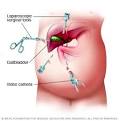Angioplasty and stent placement:
Angioplasty is a procedure to open narrowed or blocked blood vessels that supply blood to the heart. These blood vessels are called the coronary arteries.
A coronary artery stent is a small, metal mesh tube that expands inside a coronary artery. A stent is often placed during or immediately after angioplasty. It helps prevent the artery from closing up again. A drug-eluting stent has medicine embedded in it that helps prevent the artery from closing in the long term.
Balloon angioplasty – short segmentWatch this video about:
Balloon angioplasty – short segment
Description
Before the angioplasty procedure begins, you will receive some pain medicine. You may also be given medicine that relaxes you, and blood thinning medicines to prevent a blood clot from forming.
You will lie on a padded table. Your doctor will insert a flexible tube (catheter) through a surgical cut into an artery. Sometimes the catheter will be placed in your arm or wrist, or in your upper leg or groin area. You will be awake during the procedure.
The doctor will use live x-ray pictures to carefully guide the catheter up into your heart and arteries. Dye will be injected into your body to highlight blood flow through the arteries. This helps the doctor see any blockages in the blood vessels that lead to your heart.
A guide wire is moved into and across the blockage. A balloon catheter is pushed over the guide wire and into the blockage. The balloon on the end is blown up (inflated). This opens the blocked vessel and restores proper blood flow to the heart.
A wire mesh tube (stent) may then be placed in this blocked area. The stent is inserted along with the balloon catheter. It expands when the balloon is inflated. The stent is left there to help keep the artery open.
Coronary artery stent
The stent may be coated with a drug (called a drug-eluting stent). This type of stent may lower the chance of the artery closing back up in the future. Currently, drug-eluting stents are used only for certain patients.
Why the Procedure is Performed
Arteries can become narrowed or blocked by deposits called plaque. Plaque is made up of fat and cholesterol that builds up on the inside of artery walls. This condition is called atherosclerosis.
Angioplasty may be used to treat:
Blockage in a coronary artery during or after a heart attack
Blockage or narrowing of one or more coronary arteries that puts you at risk for a heart attack
Narrowings that reduce blood flow and cause persistent chest pain (angina) that medicines do not control
Not every blockage can be treated with angioplasty. Some patients who have several blockages or blockages in certain locations may need coronary bypass surgery.
Risks
Angioplasty is generally safe, but ask your doctor about the possible complications. Risks of angioplasty and stent placement are:
Allergic reaction to the drug used in a drug-eluting stent, the stent material, or the x-ray dye
Bleeding or clotting in the area where the catheter was inserted
Blood clot
Clogging of the inside of the stent (in-stent restenosis)
Damage to a heart valve or blood vessel
Heart attack
Kidney failure (higher risk in people who already have kidney problems)
Irregular heartbeat (arrhythmias)
Stroke (this is rare)
Before the Procedure
Angioplasty is often performed when you go to the hospital or emergency room for chest pain, or after a heart attack. If you are admitted to the hospital for angioplasty:
Tell your doctor what drugs you are taking, even drugs or herbs you bought without a prescription.
You will usually be asked not to drink or eat anything for 6 to 8 hours before the test.
Take the drugs your doctor told you to take with a small sip of water.
Tell your doctor if you are allergic to seafood, you have had a bad reaction to contrast material or iodine in the past, you are taking Viagra, or you are or might be pregnant.
After the Procedure
The average hospital stay is 2 days or less. Some people may not even have to stay overnight in the hospital.
In general, people who have angioplasty are able to walk around within 6 hours after the procedure. Complete recovery takes a week or less. You will be given information about how to care for yourself after angioplasty.
Outlook (Prognosis)
For most people, angioplasty greatly improves blood flow through the coronary artery and the heart. It may help you avoid the need for coronary artery bypass surgery (CABG).
Angioplasty does not cure the cause of the blockage in your arteries. Your arteries may become narrow again.
Follow your heart-healthy diet, exercise, stop smoking (if you smoke), and reduce stress to lower your chances of having another blocked artery. Your health care provider may prescribe medicine to help lower your cholesterol.
Alternative Names
PCI; Percutaneous coronary intervention; Balloon angioplasty; Coronary angioplasty; Coronary artery angioplasty; Percutaneous transluminal coronary angioplasty; Heart artery dilatation


